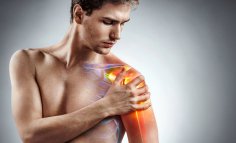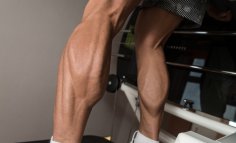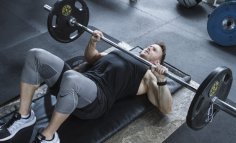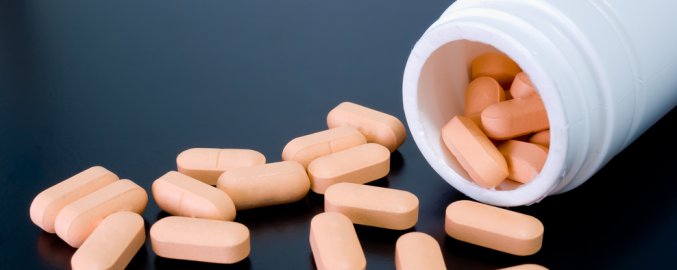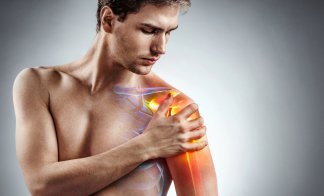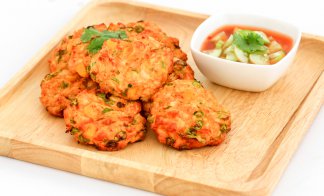Nutrition Performance
By Anssi H. Manninen, MHS
Metabolic Advantage: A Calorie is Not a Calorie
“Four stages of acceptance:
1) This is worthless nonsense;
2) This is an interesting, but perverse, point of view;
3) This is true, but quite unimportant;
4) I always said so.”
—J.B.S. Haldane, Journal of Genetics 58, p.464., 1963
Considerable attention has been given to the alarming rise in incidence of
overweight and obesity in the U.S. The latest National Health and Nutrition
Examination Survey (NHANES) shows that 64.5 percent of the U.S. population 20
years of age and older is now classified as overweight or obese!
The first law of thermodynamics describes one of the most important
principles related to obesity. The basic tenet states that energy cannot be created
or destroyed but, instead, transform from one form to another. That human beings
obeyed the first law of thermodynamics was demonstrated by Drs. Atwater and
Benedict in 1903 and has been continually reaffirmed since then.
In accord with the first law of thermodynamics, the energy equation dictates that
body mass remains constant when caloric intake is equal caloric expenditure. Any
chronic caloric imbalance on the energy output or input side of the equation
changes body mass.
Interestingly, published studies show that low-carbohydrate weight loss
diets provide a metabolic advantage, a greater weight loss per calorie consumed
compared to isocaloric high-carbohydrate diets.1 Unfortunately, these reports have
been largely ignored (“don´t confuse me with the facts”), presumably because of
apparent violation of thermodynamics (“a calorie is a calorie”). However, there is no
such violation of thermodynamic laws. Energy utilization of different diets depends
on the biochemical pathway taken; a metabolic analysis of the efficiency of
different pathways reveals large differences. Thus, there is no theoretical
contradiction in metabolic advantage and no theoretical barrier to accepting reports
describing this effect.1
Don’t Confuse Me with the Facts
According to a comprehensive literature review by Dr. Marjorie Freedman
and colleagues at the U.S. Department of Agriculture published in 2001, “No
scientific evidence exists to suggest that low-CHO [carbohydrate] ketogenic diets
have a metabolic advantage over more conventional diets for weight loss. Studies
consistently show that under conditions of negative energy balance, weight loss is
a function of caloric intake, not diet composition”.2
However, in a recent study by Dr. B. Brehm and colleagues, 53 healthy,
obese female volunteers were randomized for six months to either an ad libitum
very-low-carbohydrate diet (20-60 grams/day) or a caloric-restricted diet with 30
percent of the total calories as fat, 55 percent as carbohydrate and 15 percent as
protein.3 The women were examined at baseline, three months and six months.
Results showed that despite ingesting approximately the same number of calories,
women on the very-low-carbohydrate diets lost significantly more weight than did
those on the caloric-restricted diet (8.5 vs. 3.9 kilograms; ~18.7 pounds vs.~8.6
pounds).
In another study by Dr. F. Samaha and co-workers, 132 severely obese
men and women with either diabetes or metabolic syndrome were assigned to
either a low-carbohydrate or a caloric-restricted low-fat diet for six months.4
Seventy-nine subjects completed the study, which showed that those on the lowcarbohydrate
diet lost significantly more weight (5.8 vs. 1.9 kilograms; ~12.7 vs.
~4.2 pounds) and had greater improvements in triglycerides and improvements in
insulin sensitivity than those on the low-fat diet.
Finally, Dr. Penelope Greene and colleagues at the Harvard School of
Public Health found that people eating an extra 300 calories a day on a low-
carbohydrate diet diet lost a similar amount of weight during a 12-week study as
those on a low-fat diet.5 Over the course of the study, they consumed an extra
25,000 calories. That should have added up to about seven pounds. But it did not.
The study was unique because all the food was prepared at an upscale Italian
restaurant, so research knew exactly what they ate.
Not even Dr. Greene says this settles the case, but some found her findings
fascinating. “A lot of our assumptions about a calorie is a calorie are being
challenged,” said Dr. Marlene Scwartz of Yale. “As scientists, we need to be openminded.”
Others, though, found the data hard to swallow. “It doesn´t make sense,
does it?” said Dr. Barbara Rolls of Pennsylvania State University. “It violates the
laws of thermodynamics. No one has ever found any miraculous metabolic effects.”
Hmmm… who is Dr. Rolls?
Barbara J. Rolls, PhD, John Hopkins University School of Medicine (1992)
(owned by none other than Mayor Michael Bloomberg of New York who was
recently lambasted publicly for criticizing Dr. Atkins personally); professor of
nutrition, Penn State University; consultant for Knoll Pharmaceuticals and has
received research support from, among others, Knoll, P&G and ILSI. Co-authored
(with James O. Hill) a 1998 report for ILSI on carbohydrates and weight
management. Thus, it appears she is a carb industry shill.
What the Heck is Metabolic Advantage, Anyway?
Recently, Drs. Richard D. Feinman and Eugene J. Fine published state-ofthe-
art paper on metabolic advantage and weight loss diets in a new scientific
journal called Metabolic Syndrome and Related Disorders.1 In this review, they
tabulated some of the experimental demonstrations of metabolic advantage. They
showed that the apparent loss in energy in low-carbohydrate studies can be
accounted for by differences in pathways and metabolic cycles and that this will
appear as a thermogenic effect, as well as changes in body composition. Further,
they proposed a plausible mechanism for metabolic advantage on lowcarbohydrate
diets. Finally, they provided a brief thermodynamic analysis and
showed that, in fact, there is no barrier to accepting the published results.
Thermogenesis (thermic effect of feeding) refers to heat generated in
digestion and metabolism after feeding. Studies of macronutrient effects on
thermogenesis show a substantially greater effect of protein compared to
carbohydrate or fat. Thus, the energetically expensive protein turnover is a likely
source of metabolic advantage on low-carbohydrate diets. Interestingly, there may
also be a contribution due to the level of protein per se, independent of, or more
likely, synergistic with, carbohydrate content. A recent study by Dr. Carol Johnston
and co-workers found a 100 percent increase in thermogenesis with an 1,800
calorie low-fat diet with high protein compared to an isocaloric high-carbohydrate
diet.6
Bottom Line
According to Drs. Feinman and Fine, “The review presented here indicates
that the reported metabolic advantage of low-carbohydrate diets has a plausible
mechanism and is consistent with physical laws… Although the decline in body
mass on weight loss diets is frequently proportional to caloric intake, a diet that
offered the possibility of metabolic advantage would be of great practical value.”
There are always some concerns about high-protein diets. For individuals with
normal kidney and liver function, the risks are minimal and must be balanced
against the real and established risk of continued obesity. The ridiculous notion
that there is a single best diet for the whole population, as embodied, for example,
in the pseudoscientific USDA Food Pyramid, is under attack in the popular and
scientific press. Obviously, individual dieters must try different regimens to see
which is the most effective and fits their individual lifestyles.
Guidelines for Dieting Bodybuilders and other Power-Strength Athletes
• In my opinion, energy restriction is best achieved by a high-protein,
moderate-carbohydrate, low-fat diet.
• Protein intake should be about 1.5-2.5 grams per kilogram of body weight.
The upper level of protein is recommended if energy restriction is
substantial, as this may assist the maintenance of lean body mass and
promote satiety. Eat low-fat/high-protein meat (e.g., fish, lean meat, skinless
poultry) and low-fat/fat-free dairy products.
• Increase consumption of non-starchy vegetables and low glycemic load
fruits. Reduce intake of high-glycemic load carbohydrates with highcarbohydrate
densities such as starches (e.g,, potatoes, pasta, rice) and
grains. Consume moderate amounts of legumes.
• Have most of the total fat intake be from nuts and oils that are rich in
monounsaturated fats (e.g., olive oil).
• Set a realistic rate of weight loss (i.e., 0.5 to 1.0 kilograms, or about one to
two pounds, per week), including both short- and long-term goals.
• Keeping a food record for a defined period (e.g., a week) is a useful task
that allows you to appreciate exactly what you are eating.
• A moderate energy restriction of 500 to 1,000 kilocalories per day is
appropriate to producing a reasonable loss of body fat but still ensures
adequate nutrient intake.
• The meal plan for weight loss should not rely on skipping meals or enduring
long periods without food intake. Rather, food intake should be spread over
the day, particularly to allow for efficient refueling before and after training
sessions and to avoid hunger (which generally precipitates overeating).
• Use a broad-range, low-dose vitamin-mineral supplement if you will restrict
energy intake for prolonged periods.
• A significant part of weight loss and management may involve restructuring
the environment that promotes overeating. Simple changes that can modify
the eating environment: 1) prepare meals at home and carry bag lunches; 2)
learn to estimate or measure portion sizes in restaurants; 3) learn to
recognize fat content of menu items and dishes on buffet tables; and 4)
modify the route to work to avoid a favorite food shop.
• A myth that is circulating contends that in order to burn fat, you must
exercise at a lower percentage of your maximal oxygen uptake (VO2max).
This is certainly not the case. It is true that the percentage of energy
obtained from fat is greater at lower exercise intensities (e.g., 50 percent
VO2max) than at higher exercise intensities (e.g., 70 percent VO2max).
However, at the higher energy intensity, you will derive a lower percentage
of your energy output from fat, but the total energy expenditure will be
greater, and you will still burn about the same amount of fat calories as you
would exercising at the lower intensity, providing you are exercising for the
same amount of time. If you want to burn calories to lose body fat, your
objective should be to burn the greatest total calories possible within the
time frame you have to exercise.
• Exercise, particularly intense exercise, may be used to curb appetite on a
short-term basis at an appropriate time. If you exercise before a meal, your
food intake may be reduced considerably. Try it and see if it works for you. If
you have the facilities available, a good half-hour exercise may be an
effective substitute for a large lunch.
• There are two medications approved for the long-term treatment of obesity.
Sibutatramine is a norepinephrine and serotonin reuptake inhibitor that
inhibits food intake centrally; orlistat is an inhibitor of pancreatic lipase
functions. Although generally well tolerated, orlistat can give gastrointestinal
symptoms such as abdominal cramps, soft stools and fecal urgency. If these
symptoms were to occur during exercise, training disruptions could result.
Phenylpropanolamine is approved for the short-term treatment of obesity
(fewer than 12 weeks). Phenylpropanolamine is a central alpha-1 adrenergic
stimulator that has no addictive potential and gives weight loss equivalent to
prescription anorectic drugs during the first four weeks of treatment.
Phenylpropanolamine has a remarkable safety record.
8 Finally, a variety of drugs currently on the market for other conditions, but not approved by the FDA for obesity
treatment, have been evaluated for their ability to induce weight loss.
Metformin, cimetidine, diazoxide, bromocriptine, nicotine, bupropion and
topiramate have produced modest weight loss.9 However, additional studies
are needed to support these findings. Potential obesity drug candidates
include cholecystokinin, corticotropin-releasing hormone, glucagons-like
peptide 1, growth hormone and other growth factors, enterostatin,
neurotensin, vasopressin, anorectin, ciliary neurotrophic factor, and
bombesin, all of which potentially either inhibit food intake or reduce body
weight in humans or animals.9
References
1. Feinman RD, Fine EJ (2003) Thermodynamics and metabolic advantage of weight loss
diets. Metabolic Syndrome and Related Disorders, 1:209-219.
2. Freedman M, MR, King J, Kennedy E (2001) Popular Diets: A Scientific Review. Obes Res,
9:1S-34S.
3. Brehm BJ, Seeley RJ et al. (2003) A randomized trial comparing a very low carbohydrate
diet and a calorie-restricted low fat diet on body weight and cardiovascular risk factors in
healthy women. J Clin Endocrinol Metab, 88:1617-1623.
4. Samaha FF, Iqbal N et al. (2003) A low-carbohydrate diet as compared to with a low-fat diet
in severe obesity. N Engl J Med, 348:2074-2081.
5. Greene P, Willett W et al. (2003) Pilot 12-week feeding weight loss comparison: low-fat vs.
low-carbohydrate (ketogenic) diets [abstract]. Obes Res, 11:A23.
6. Johnston CS, Day CS et al. (2002) Postprandial thermogenesis is increased 100% on a
high-protein, low-fat diet versus a high-carbohydrate, low-fat diet in healthy, young women.
J Am Coll Nutr, 21:55-61.
7. Bell SJ, Sears B (2003) A proposal for a new national diet: A low-glycemic load diet with a
unique macronutrient composition. Metabolic Syndrome and Related Disorders, 1:199-208.
8. Greenway F (2003) Use of pharmacological aids in weight management. In: Weight
Management: State of the Science and Opportunities for Military Programs. Committee on
Military Nutrition Research, Food and Nutrition Board, Institute of Medicine. Washington,
D.C.: National Academies Press, p. 213-217.
9. Committee on Military Nutrition Research (2003) Weight-loss and maintenance strategies.
In: Weight Management: State of the Science and Opportunities for Military Programs.
Committee on Military Nutrition Research, Food and Nutrition Board, Institute of Medicine.
Washington, D.C.: National Academies Press, p. 79-111.



